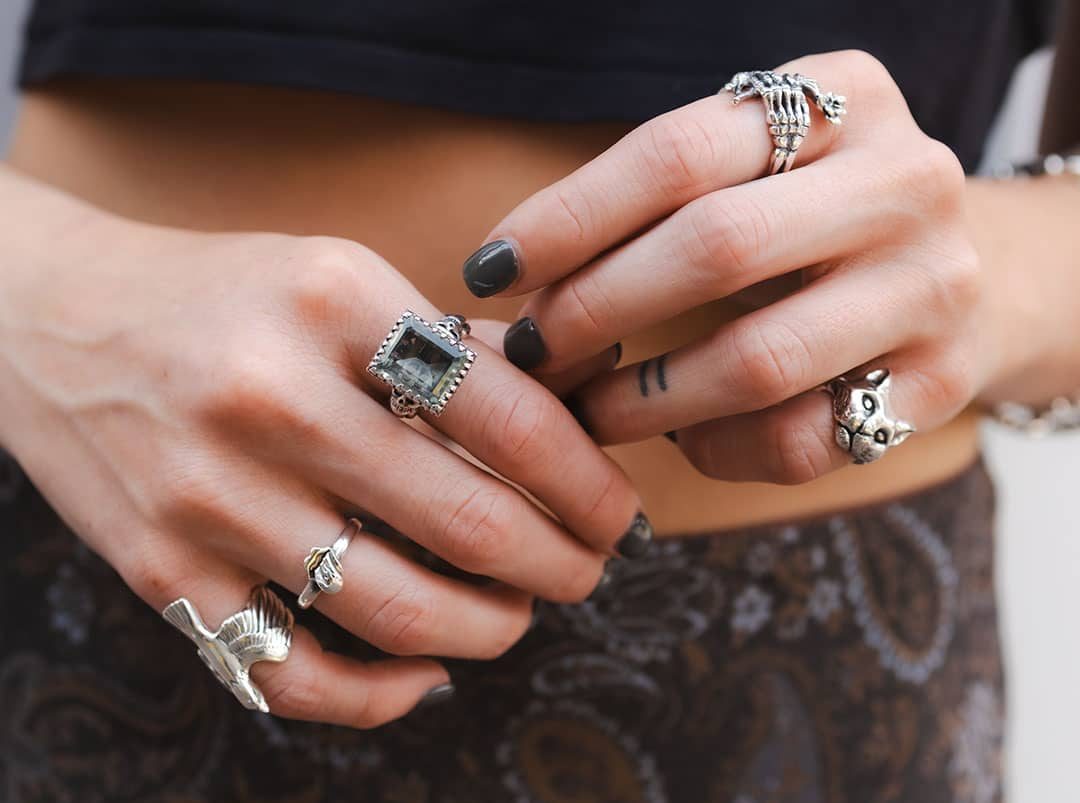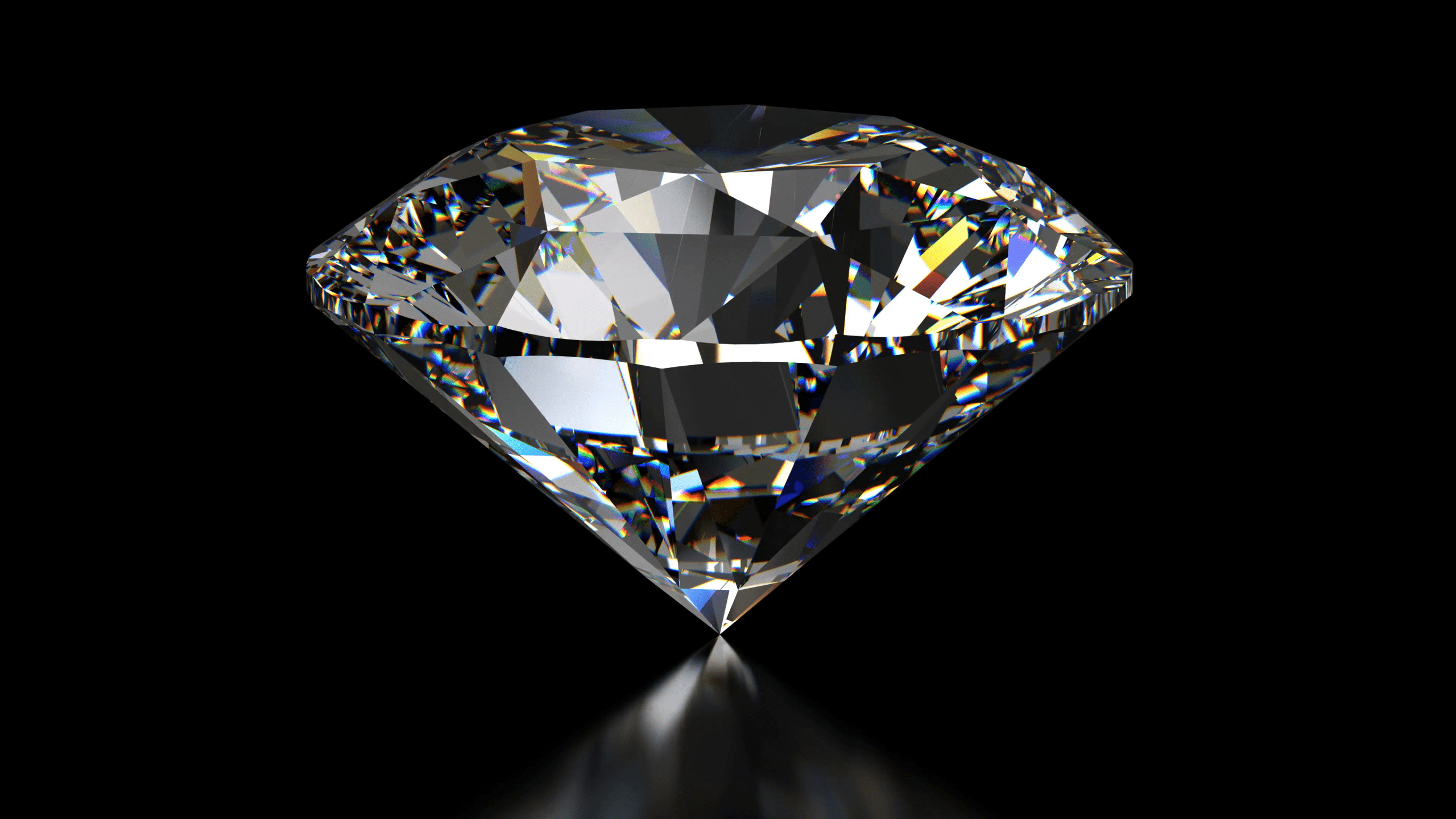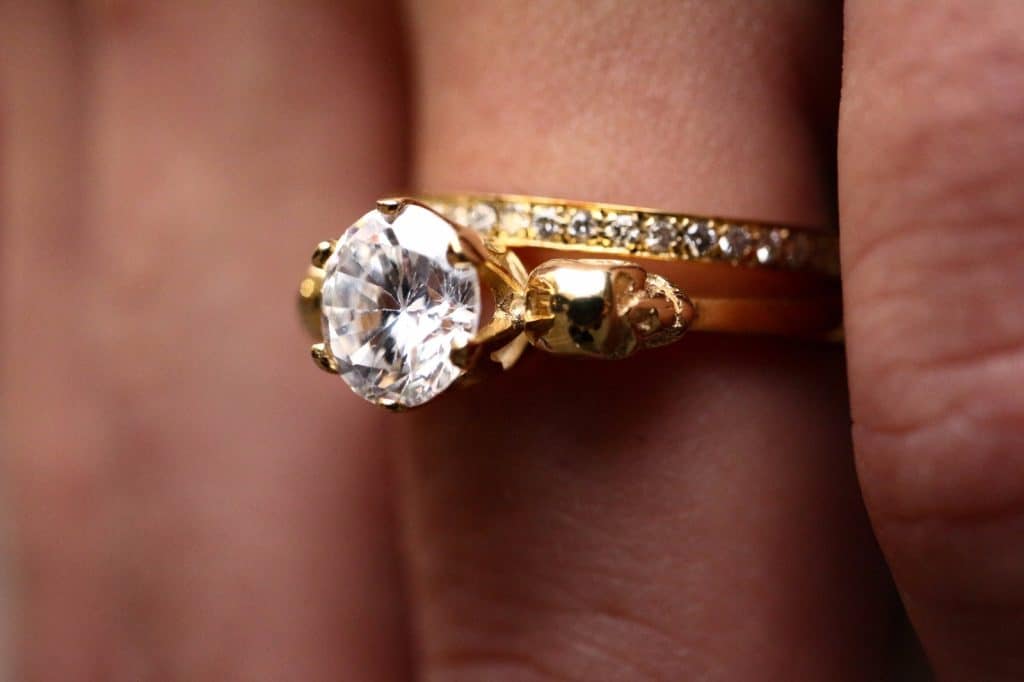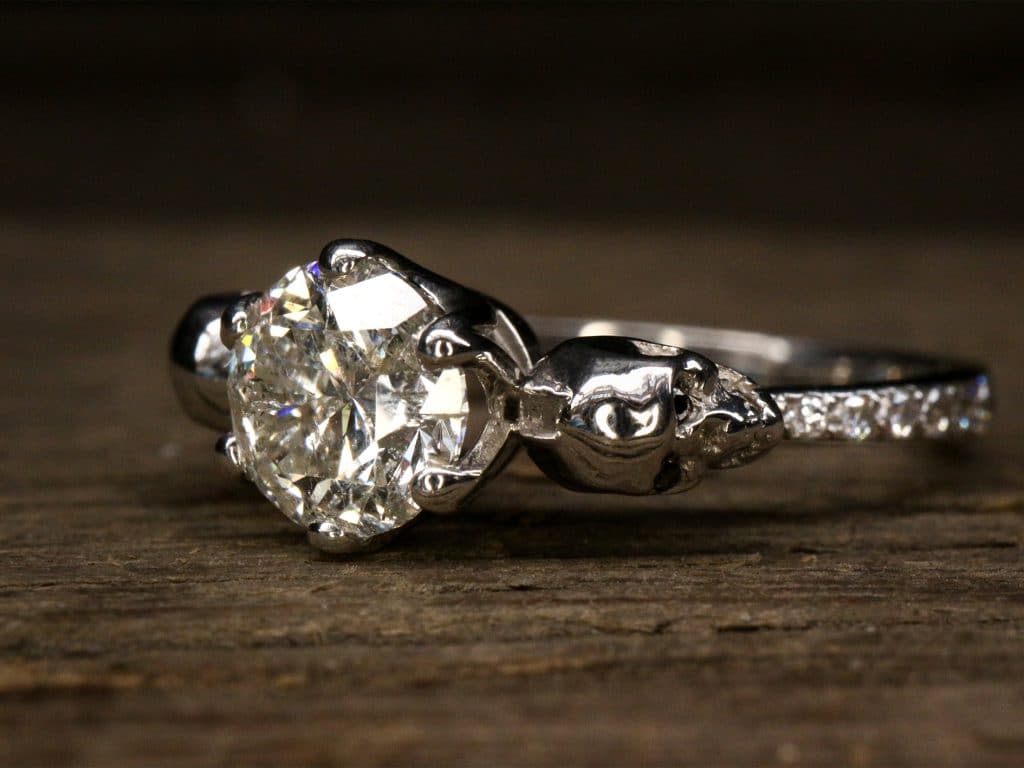We often think of a diamond’s cut as a shape: round, emerald, pear etc, but a diamond’s cut grade is really about how well a diamond’s facets interact with light. Precise artistry and workmanship is required to shape a stone so its proportions, symmetry and polish makes it as bright, clear and reflective of light as possible.
The quality of cut is crucial to the diamond’s final beauty and value, and of all the 4Cs, it is the most complex and technically difficult to analyse. A diamond’s proportions determine how light performs when it enters the diamond. If light enters through the crown and goes out through the pavilion, the diamond will look dark and unattractive. Diamonds with different proportions and good polish and symmetry make better use of the light, and will be bright, colourful, and scintillating.
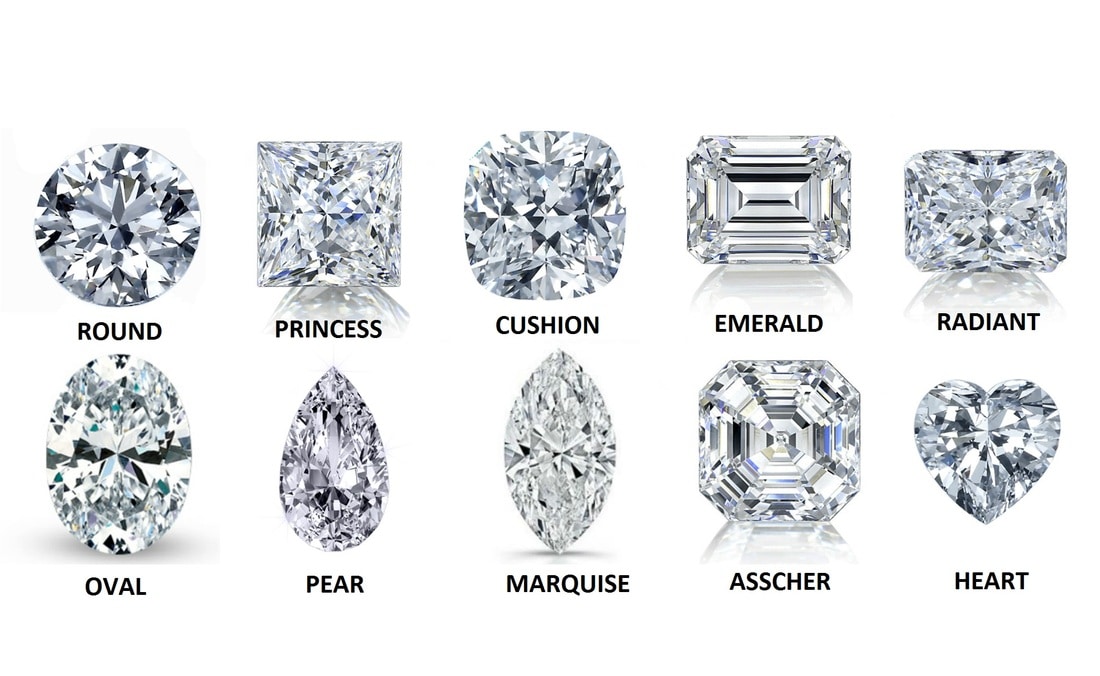
A beautiful diamond looks the way it does because of three optical effects: white light reflections called brightness, flashes of colour called fire, and areas of light and dark called scintillation. Pattern is the relative size, arrangement, and contrast of bright and dark areas that result from a diamond’s internal and external reflections. There must be enough contrast between the bright and dark areas to give the pattern a crisp, sharp look.
The term “cut” also describes a ‘fashioned’ diamond’s shape. Shapes other than the standard round brilliant are called fancy cuts. They’re sometimes called fancy shapes or fancies. Fancy shapes also have names of their own, based on their shapes. The best known are the marquise, princess, pear, oval, heart, and emerald cut.

